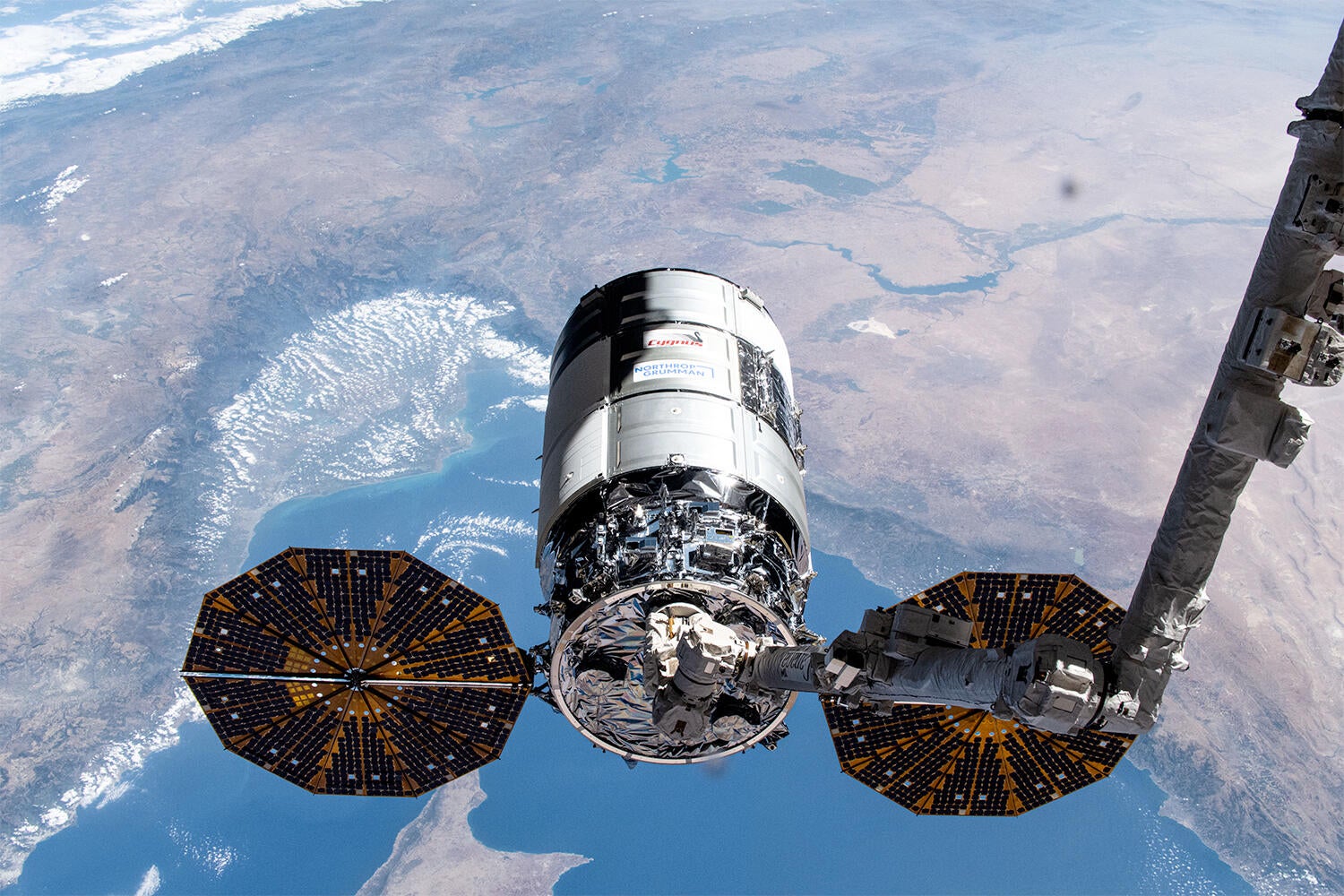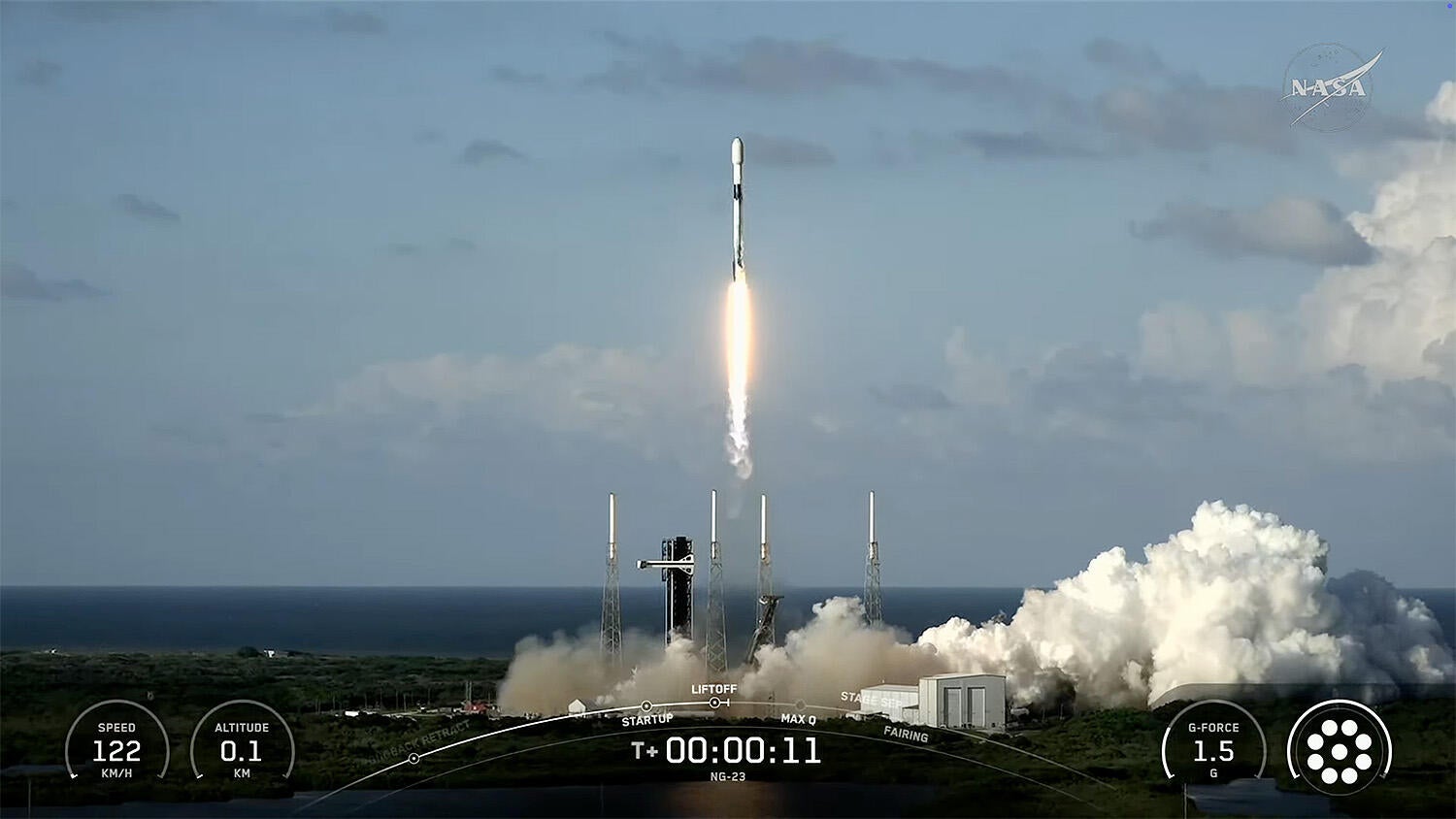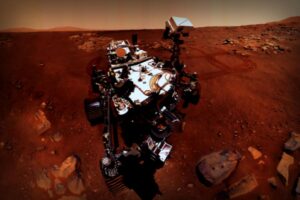Northrop Grumman’s Cygnus XL cargo ship was set to deliver over 11,000 pounds of vital supplies to the International Space Station when things went awry. On Tuesday, flight controllers faced a setback as two of the spacecraft’s engine firings shut down earlier than expected. This hiccup means the eagerly anticipated rendezvous with the space station has now been delayed.
The cause of the engine shutdown isn’t clear yet, and it’s uncertain when the cargo ship might be cleared to finish its approach if the flight controllers manage to sort out the issues and come up with an alternate maneuver plan.

Early Tuesday morning, NASA shared in a blog post that the main engine of Cygnus XL stopped unexpectedly during two burns aimed at raising its orbit for docking with the station. Fortunately, all of the other systems on board the Cygnus were reported to be functioning normally.
Details remain sparse for now.
The Cygnus made its launch debut on Sunday from Cape Canaveral aboard a SpaceX Falcon 9 rocket. It successfully separated from the rocket’s upper stage as planned, kicking off a meticulously planned series of rocket firings geared toward meeting up with the space station.
Unlike the automated docking capabilities of SpaceX’s Dragon and Russia’s Progress freighters, the Cygnus is designed to be caught by the station’s robotic arm and guided in for a safe berth.
The capture and docking procedure for the Cygnus XL was scheduled for Wednesday morning, but is now on hold as engineers troubleshoot the engine issue and consider new plans for rendezvous.
According to NASA, “The Cygnus XL will not arrive at the International Space Station on Wednesday, September 17, as initially intended, leading to a review for a new arrival date and time.”
In contrast, a Progress spacecraft launched last week successfully docked with the station this past Saturday. The launch of Cygnus XL is particularly significant for Northrop Grumman, considering that a previous Cygnus was damaged while being transported from Europe to Cape Canaveral, and it remains grounded as they analyze and address the damage.
Sunday’s launch marks the third in at least four missions funded by Northrop Grumman through SpaceX while the company also progresses toward developing a new booster.

This mission also signifies the inaugural flight of the Cygnus XL, named for its enhancements allowing it to carry more cargo per flight to the station.
Dina Contella, deputy manager for NASA’s space station program, expressed excitement prior to the launch regarding the increased capacity of the revamped cargo ship. “It’s approximately 1.6 meters (5 feet) longer and can carry an additional 2,600 pounds of cargo,” she noted.
On this inaugural adventure, the Cygnus XL is packed with over five tons of spare parts, research material, and supplies intended for the crew, complete with festive treats for the astronauts onboard the station.
Contella emphasized, “The Cygnus is filled with essentials, ranging from nitrogen and oxygen to food and crucial parts for our systems, including components for our urine processor. We’re prioritizing stocking up because we’ve faced shortages this past year, and it’s essential to have a healthy reserve moving forward.”
NASA funds cargo transport for both Cygnus and Dragon spacecraft. So far, SpaceX has conducted 32 successful Dragon resupply missions, while Northrop Grumman has seen 20 successful flights, excluding the current operation.
Both companies experienced the challenges of launch discrepancies early in the commercial resupply program, each having undergone one in-flight failure in the past.



















